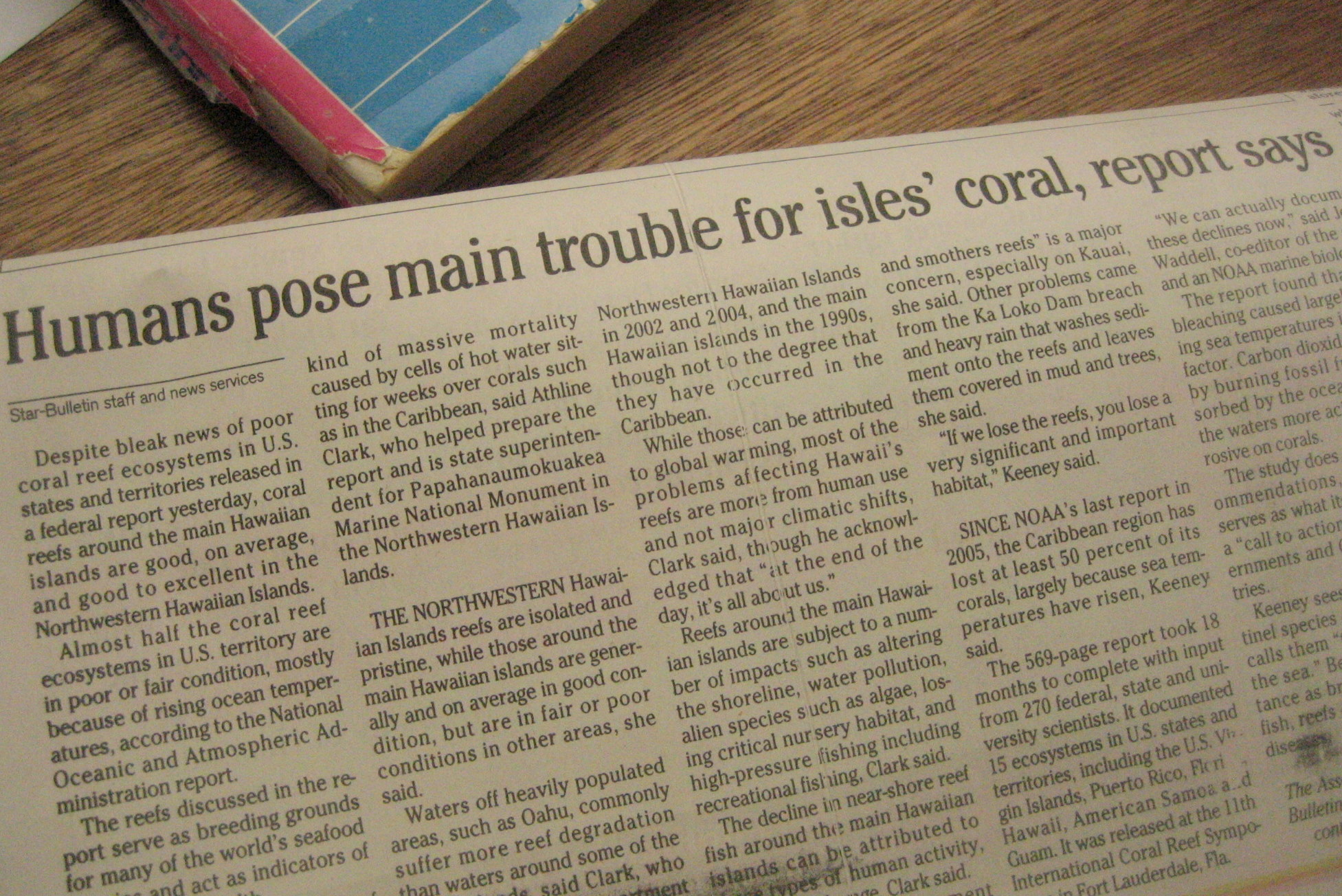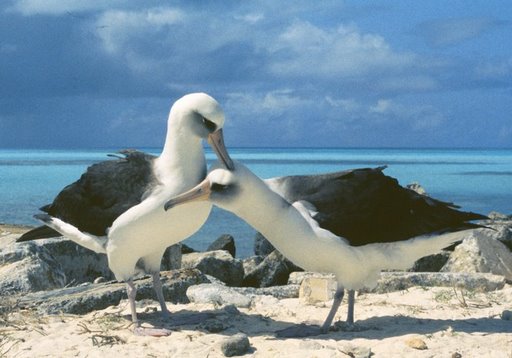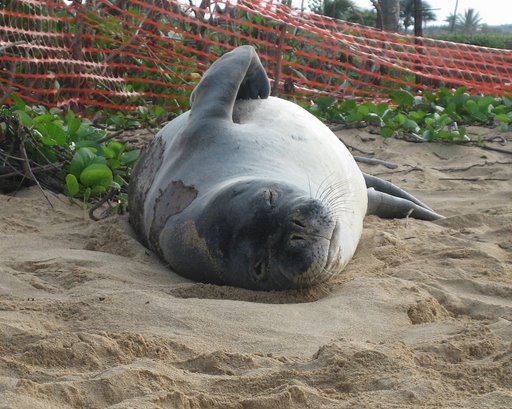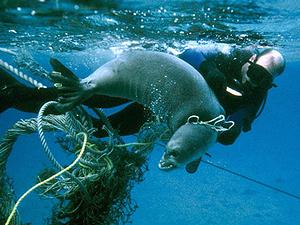Blog
News, updates, finds, stories, and tidbits from staff and community members at KAHEA. Got something to share? Email us at: kahea-alliance@hawaii.rr.com.
but we knew that already
Star-Bulletin headline from yesterday: “Humans pose main trouble for isles’ coral, report says.” So says the report-back from the 11th International Coral Reef Symposium.
The good news is that on average Hawaiian reefs are doing better than those in other places under United States jurisdiction, despite pressures from human impacts. According to the report, the Northwestern Hawaiian Islands–an area whose remoteness has protected it from many types of human impacts–are still considered relatively pristine.
Full story here: http://starbulletin.com/2008/07/08/news/story03.html
Honolulu NWHI Hearing Online
Video of the Honolulu hearing on the Draft Management Plan for the Papahanaumokuakea Marine Monument in the Northwestern Hawaiian Islands held in Honolulu on June 24th. The 1,200 page plan will direct the future of public trust resources in the last, large intact Hawaiian reef ecosystem in the world.
At the hearing, leading local conservation voices, including Keiko Bonk, Marjorie Ziegler, Dr. Stephanie Fried, Kyle Kajihiro, Leila Hubbard, Dave Raney, Don May and KAHEA staff (Evan, Bryna, Marti, and Miwa) testified to their concerns about the draft plan. (Testimony starts at 33:30).
In the largest no-take marine reserve on the planet, this draft of the Federal/State plan is proposing: the construction of a “small municipality” on Midway, new cruise ships, more tourists, increases in extractive research, new risks of invasive species introductions, exemptions for fishing, and opening of the area to bioprospecting. An expansion of military activities–including sonar, ballistic missile interceptions, and chemical warfare simulations–would be allowed to go forward with no mitigations. The plan also disbands the existing citizen advisory council, which is pretty much the only opportunity for members of the public (non-government scientists, advocates, cultural practitioners, and resource experts) to participate in decision-making.
You can also watch the hearings on `Olelo Channel 52.
You can support by submitting your own written comments, signing our petition, and spreading the word. Mahalo piha to the thousands who have already supported the call for a better plan!
Evan in Honolulu Advertiser: concerns persist over NWHI plan!
Evan is our rock star summer intern here at KAHEA, a UH Law Student, and Fellow with the Center for Excellence in Native Hawaiian Law. He has spent much of the last month combing the 1,200 page draft plan for the future of the Northwestern Hawaiian Islands–some of the last intact Hawaiian coral reef on the planet. He has been working along with experts in resource management, science and cultural practice to review, analyze and develop our detailed comments on the draft plan.
From his commentary in the Honolulu Advertiser:
After a two-year multi-agency effort, the public had only 75 days to muster up comments on the four-volume draft. Tomorrow is the deadline [the deadline was recently extended 15 days to July 23] thus far, we have simply not heard from the people.
Among the greatest concerns in the current draft is the abandonment of the “precautionary principle,” which requires biological, cultural and historic resource protection and integrity to be favored when there is a lack of information regarding the potential impacts of any activity.
After the public spoke clearly about their desire to maintain this fragile ocean wilderness as a pu’uhonua (forever sanctuary), this principle was firmly embedded into the presidential proclamation that established the monument.
Instead, this “do no harm” mandate was watered down and replaced with research plans of a questionable nature and vamped-up visitor plans. Even more important, the people have been stripped from the process.
The draft plan fails to mention retaining a public oversight committee. The Reserve Advisory Council played a pivotal role in providing public oversight in the creation of the monument, yet any similar entity has been eliminated.
Other areas where notable improvements can be made include: the need for Native Hawaiian involvement in the leadership and management of the monument; revisions to the permitting process, including renewal and enforcement; prioritizing research around critical conservation needs; the absence of an effective cumulative impact analysis, excessive ecotourism and visitor plans on Midway; and an incomplete and largely unsubstantiated cultural impact assessment.
With time running out, I urge you to visit www.kahea.org to see some of the major concerns that have been outlined by citizens, scientists, environmental advocates and Native Hawaiians who have been diligently parsing the draft proposal.
15 more days to speak up for some of Hawai`i's last intact coral reefs!
Thanks to your strong requests for additional time, government managers have granted an extra 15-days for public comment–moving the final deadline for comments to July 23. It ain’t much, but it is something.
If you’re a member of the KAHEA Action Alert Network, you’ve been seeing alerts on protecting the future of the pristine coral reefs of the Northwestern Hawaiian Islands (also known as the NWHI)… for about a month now.
We’re taking our extra 15 days, and along with thousands of others around the world, we’re asking for a better, stronger management plan. This plan spells out how the NWHI will be protected for the next 15 years.
So we’ll say it again! Without a better plan, we will be opening the Northwestern Hawaiian Islands to :
- Expanded military activities with NO mitigations
- Increased extractive research with NO protection from bioprospecting
- Increased development footprint, and more construction
- Increased vessel traffic
- Cruise ships and increases in permitted tourism
You can support by submitting your own written comments, signing our petition, and spreading the word. Mahalo piha to the thousands who have already supported the call for a better plan!
Hawaii County Council Passes Reso on DU: Clean 'em up first!
Mahalo to friends/activists on the Big Island! Ho‘omaika‘i ia! And thanks to everyone who submitted testimony and responded to action alerts–the resolution on depleted uranium passed without bad amendments–you helped make it happen!
From West Hawaii Today:
The council approved a resolution from Puna Councilwoman Emily Naeole that requests the U.S. Army to halt B-2 bombing missions and live firing exercises until it’s determined whether depleted uranium is present at the Pohakuloa Training Area.
Although the resolution does not carry the power of law, the council spent more than six hours Wednesday discussing it and listening to testimony from numerous residents in favor of it.
The council heard from Dr. Lorrin Pang with the state Department of Health who, speaking as a resident, painted a grim picture regarding the lack of information there is on DU levels on the island and the circumstantial evidence that depleted uranium may be responsible for a spike in new cancer cases.
From 2000 through 2004, Pang said 444 new cancer cases were reported on the Big Island, which is more than new cases from the other Hawaiian Islands.
A majority of the county’s new cancer cases were from Kona, where dust originating from PTA usually ends up because of wind, he said. “It is prudent a survey be done to put to rest our uncertainty about (the military’s) record-keeping,” Pang said. “Something’s cooking here on Big Island.”
Depleted uranium was discovered at PTA in 2006, which originated from spotting rounds in Davy Crockett weapons systems tested in the 1960s.
The council approved a few amendments to the resolution, including one from Ka’u Councilman Bob Jacobson that states the “U.S. military shall conduct a search of all records for firing of depleted uranium at (PTA) and all other Hawaii state military sites and release pertinent information to the public.”
An amendment from Council Chairman Pete Hoffmann, Kohala, to remove language in the resolution that requests the military to halt bombing missions and live firing exercises was defeated in an 8-1 vote, with Hoffmann the only one to cast a favorable vote. Hoffmann, who served in the military for more than 28 years, said he agrees the country should not be in Iraq, but because that is the case, the request in question would lead to inadequate training.
Other council members said the Army should find a different place to train until it’s determined if depleted uranium is causing problems for residents and military personnel.
Hamakua Councilman Dominic Yagong said the council’s favorable vote puts the military on notice “that you have to investigate.”
Army Col. Howard Killian told the council the military plans to have a citizen monitoring committee in place by the end of the month. South Kona Councilwoman Brenda Ford plans to introduce a resolution that requests Pang is placed on the committee as the council’s representative.

photo: The Davy Crockett Atomic Battle Group Delivery System fired on the Big Island (island breath post)
NWHI Marine Monument Hearings on Oahu TV
From our buddy Oren, who helped us get this public hearing documented and on air:
The video taping of the Honolulu hearing on the Draft Management Plan for The Papahanaumokuakea Marine Monument in the Northwestern Hawaiian Islands held in Honolulu on June 24th will be aired on ‘Olelo Community Television on ch. 52 as well as on its internet website olelo.net–which simultaneously streams ch. 52.
7/3/08 Thu 1:00 pm
7/10/08 Wed Midnight
7/17/08 Wed Midnight
7/24/08 Thu 1:00 pm
In a few days we maybe able to get it on the internet for anyone to watch at any time.
I’d like to thank especially Bill Sager, John Isagawa, Dave Gonzales, Rob Kinslow and the peoples’ at ‘Olelo Community Television —with a lot of their efforts—-, all of whom, who helped to tape this thing together.
WANTED: Critical Habitat for Monk Seal
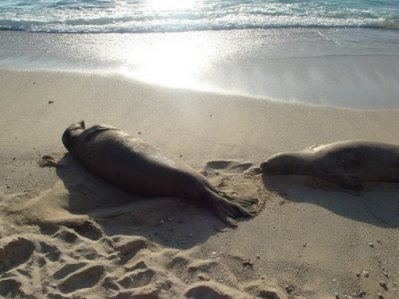
KAHEA, along with the Center for Biological Diversity and the Ocean Conservancy, filed a formal petition yesterday, seeking to have beaches and surrounding waters on the main Hawaiian islands designated as critical habitat for Hawaiian monk seals under the Endangered Species Act.
Under the Endangered Species Act, critical habitat identifies geographic areas that contain features essential for the conservation of a threatened or endangered species and may require special management considerations.
Recent studies have shown that species with critical habitat are twice as likely to be recovering as species without it. Currently, the species has critical habitat designated only on the Northwestern Hawaiian Islands.
The Hawaiian monk seal is one of the most endangered marine mammals in the world. Since the 1950s its population has dropped to about 1,300 animals and is continuing to decline. Scientists estimate populations will likely drop below 1,000 seals within a few years.
Monk seals in the Northwestern Hawaiian Islands are dying of starvation, emaciated and weak, scientists have found. Pups have only about a one-in-five chance of surviving to adulthood. Other threats include drowning in abandoned fishing gear, shark predation, and disease.
Hawaiian monk seals are increasingly populating the main islands, where they are giving birth to healthy pups. For the past decade, the number of Hawaiian monk seal births has increased each year on the main islands, and the population of seals is growing steadily; the seals are in better condition than those in the Northwestern Hawaiian Islands. This indicates more food availability and a better chance of survival.
Global warming is also a threat to the survival of Hawaiian monk seals. Already, the conservation groups warn, important pupping beaches have been lost due to sea-level rise and erosion, and the northwestern islands will eventually disappear under predicted levels of sea-level rise since they are elevated only a few meters above sea level. The higher-elevation main islands are less vulnerable to sea-level rise.
Hawaiian monk seals are one of three species of monk seals. The Mediterranean monk seal is also critically endangered, while the Caribbean monk seal, which has not been seen in half a century, was declared extinct in June.
The Endangered Species Act requires that the government respond to this petition within 90 days.

